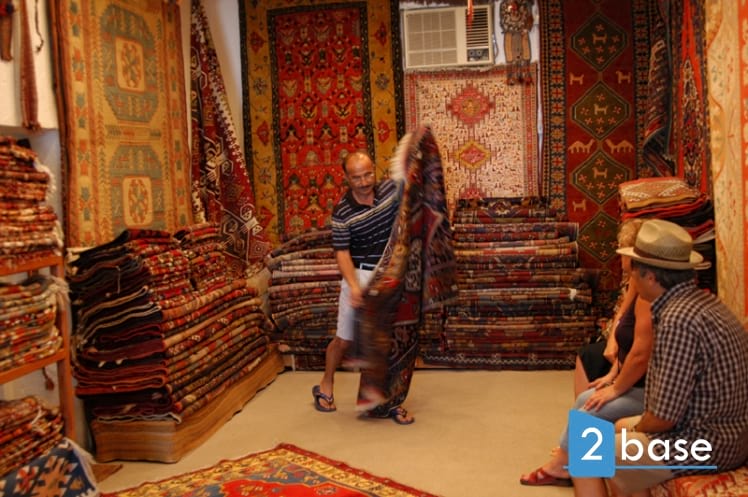The story of Turkish carpets dates back more than 3,000 years and over the years millions of Turks have been occupied producing and selling carpets
The story of Turkish carpets dates back more than 3,000 years and over the years millions of Turks have been occupied producing and selling carpets. These colourful and often very beautiful carpets differ from other oriental carpets by being the only ones in the world knotted with double knots.
Techniqually this means that each knot itself is secured twice around the transverse threads. Turkish carpets are therefore said to last longer than other handmade carpets.
To ensure the carpet is handmade try turning it over to have a look at the fringes on the edge of the carpet. On machine made carpets this edge will often be sewn onto the carpet. Also try to pull the fringes. The thread should yield through the whole carpet.
There are three main types of hand knotted carpets.
Wool on wool: Because of the thicker wool thread, a coarser and not such a fine carpet.
Wool on cotton: Here the wool thread is knotted around a transverse cotton thread. The pattern is a little finer and therefore also a little more expensive.
Silk: The finest most expensive carpets.
Every region in Turkey has their own way of decorating and producing carpets. Among the most well known are the Milas carpets from the western part of Turkey. These carpets have a yellowish colour and are mainly wool carpets.
Konya carpets on the other hand are made from cotton of a very high quality. They are knotted with many extra double knots and are usually decorated with medallions from seljuk times.
The nomads normally use symbols from their everyday life when decorating their carpets. For example the scorpion is a popular motif, since it illustrates their freedom, while a camel foot symbolizes their means of transport. Generally the nomads make very colourful carpets.
Finally there are carpets from the Herake region. The best carpets with the most double knots are produced here. They come in both cotton and silk and usually have a flower motif. Until Turkey became a republic, the Herake region only made carpets for Sultans palaces.


